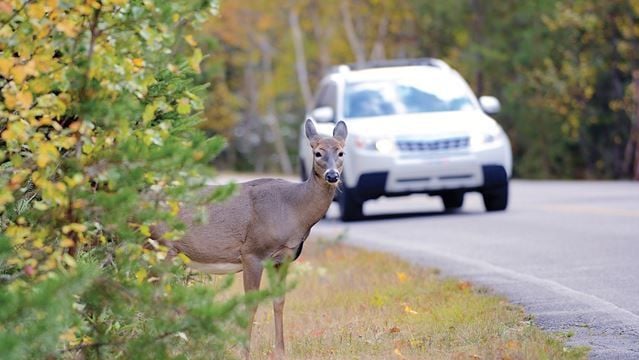Any local Australian can tell you that our country has some of the most diverse wildlife in the world. From kangaroos to wallabies, echidnas to emus and camels to brumbies, you can spot just about anything and everything hiding in the bush.
But our animal population could use a little help.
Every year, hundreds of thousands of deer, wombats, possum and other creatures die on our freeways, highways and carriageways. Though a few areas see more animal accidents and injuries than others, some estimate that you can find roadkill on every 20 to 30 metres of road.
If you want to protect our wildlife as well as reduce the risk of animal damage to your vehicle, be sure to practice all of the following whenever you sit behind the wheel.
1. Research Your Route
If you have a lengthy road trip ahead of you, do more than decide which roads you want to take and which sites you want to visit along the way. As you research your path, take the time to discover which animals are most prominent in the area, and find out which times these animals become most active.
For example, if you were to drive near Daintree, North Queensland, you'll have a higher likelihood of seeing cassowaries. Many roads cut through cassowary territory, and the endangered birds have to travel across the roads as they search for food.
Cassowaries are most active at dawn and dusk, and they tend to take shelter during the middle of the day. So if you plan to drive in the area, avoid traveling in the early morning and evening hours to minimise your risk of hitting them.
2. Drive During the Day
Don't have a lot of time research the area? As a general rule, do most of your driving during the midafternoon. Diurnal animals tend to rest and relax in the shade to avoid the summer heat during the day, and nocturnal animals will still be sleeping in their holes, trees and caves.
If you have a particularly long journey ahead of you, take your rest stops during the dusk and dawn hours when animals become the most active. When you drive at night, always use your headlights (and preferably your high beams) to give yourself plenty of time to see any wildlife in the road.
Remember to slow down as much as possible to give yourself more time to stop during an emergency, and pay attention to your speed whenever you see animal crossing signs.
3. Don't Dump Your Litter
When you have a car full of gear, you may feel a little cramped for space. As you gradually nibble at the snacks in your car, you may feel tempted to dump any leftovers out the window. After all, the food is biodegradable, right? You may even think that many smaller animals will appreciate the snack more than you did.
But though the animals love the treats, you should take care not to feed them this way. When you dump your trash near the road, the smell will attract creatures as they look for food. Soon the animals associate the roadways as a location for easy food rather than a potential death zone.
So please, hold onto your garbage until you can properly dispose of it.
4. Pay Attention to the Shoulder
Concrete and asphalt absorb heat during the day, providing a warm comfortable place to sleep at night. Many animals will huddle up on the shoulder of the road to stave off the chill.
Although the creatures will be safe if they stay where they are, they can easily become confused when they see bright lights coming their way. In their attempt to escape, some animals may jump from the shoulder of the road to the middle of the road and back again in a panicked pattern.
As you drive, pay attention to the shoulder of the road. If you see any indication of wildlife nearby, lower your speed immediately, and give the animals plenty of time to cross (even if they try to travel away from the road at first).
Give Our Wildlife a Fighting Chance
When you follow these four steps, you greatly decrease your chances of hitting an animal and damaging your vehicle. However, if you do happen to injure an animal while driving, call your local wildlife rescue group for help.


)
)
)
)
)
)
)
)
)

)



